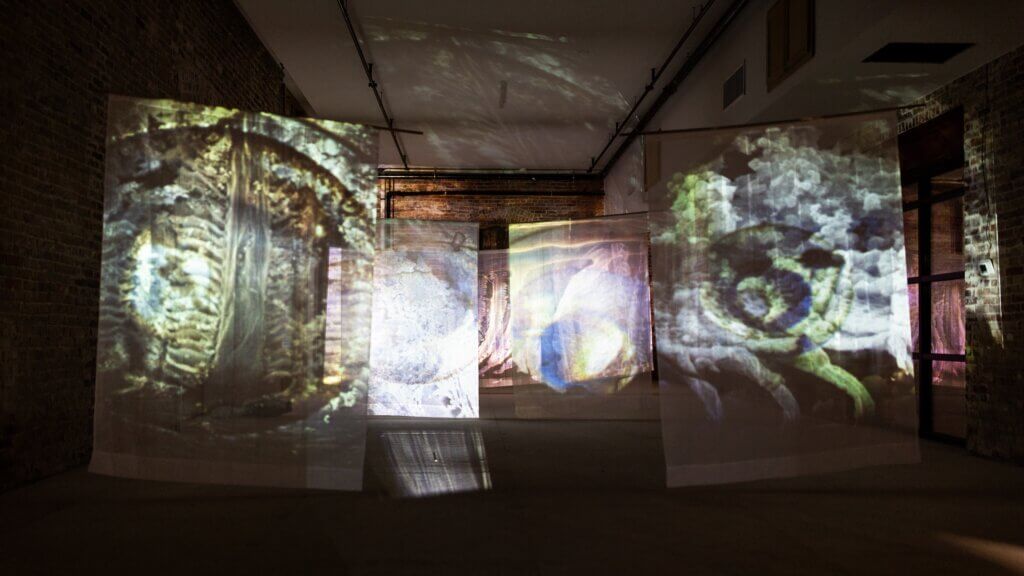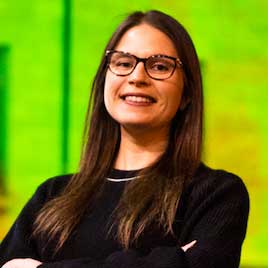The workshop
In October I had the pleasure of leading the in-person workshop “Projection Mapping Magic: A Workshop on Crafting a Projected Community Quilt” which was held inside and outside the UCSF Kalmanovitz Library. The workshop began in the library classroom where I gave an overview of projection mapping, which is a technique that takes video content and conforms it to a specific site or structure to match its architecture or shape. Participants then gathered outside of the library to combine the video content that they individually produced into a community quilt that was projected on the outside of the UCSF Library. The participants worked together to come up with a projected design that showed off the desired parts of each of their videos. We then worked to conform the collaborative video to the library’s architecture, combining multiple video clips into the same projection field. Other community members were also able to gather to view the projected quilt as well.
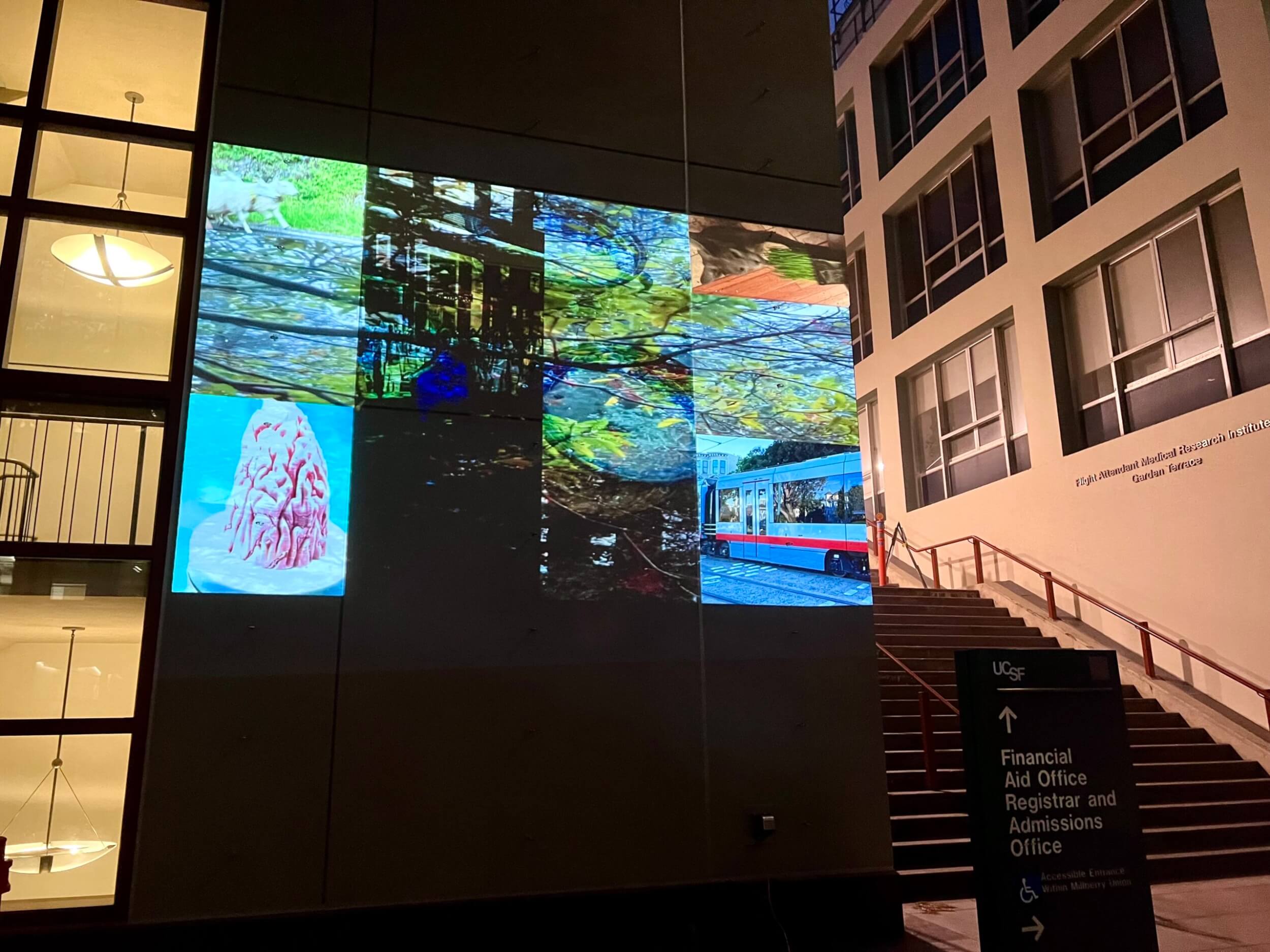
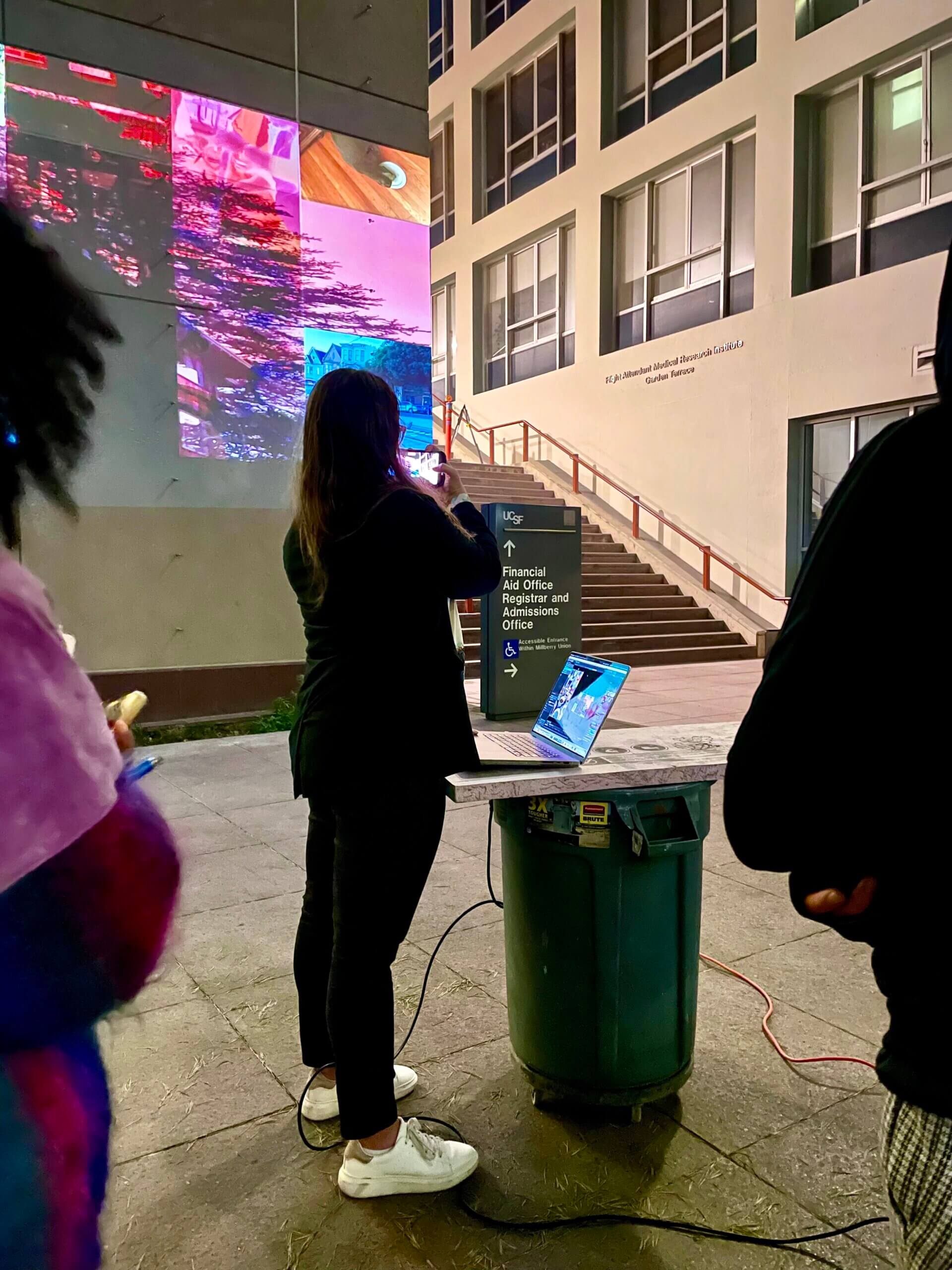
While visiting UCSF, I had an excellent tour of the UCSF Archives and Special Collections where Polina Ilieva showed me a sampling of the anatomical books and drawings that were interactive. This very much piqued my interest! I also spent time in the Makers Lab with Dylan Romero working on a case for my interactive video project. It was excellent to see all the facilities, and people who make these projects happen!
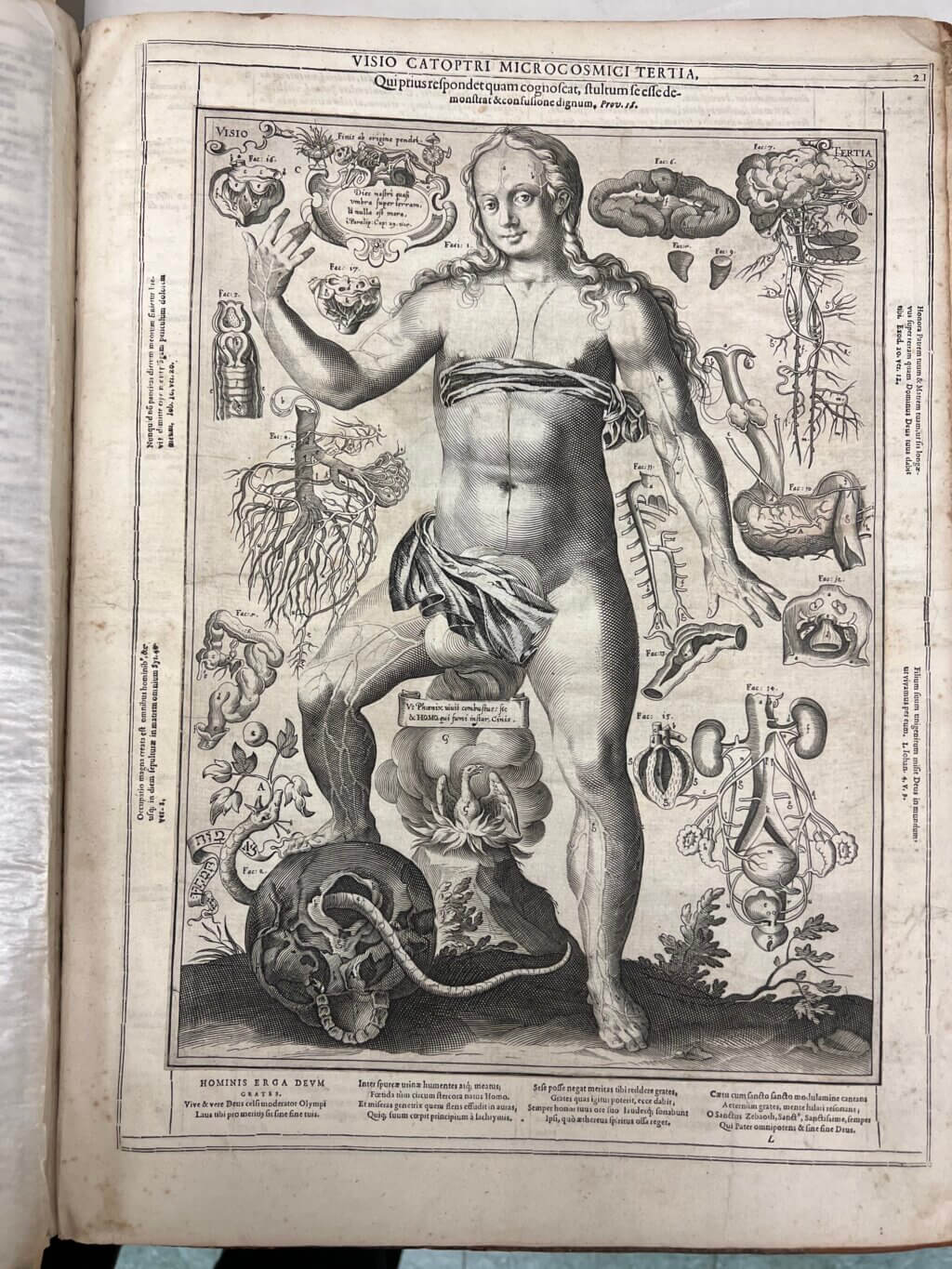
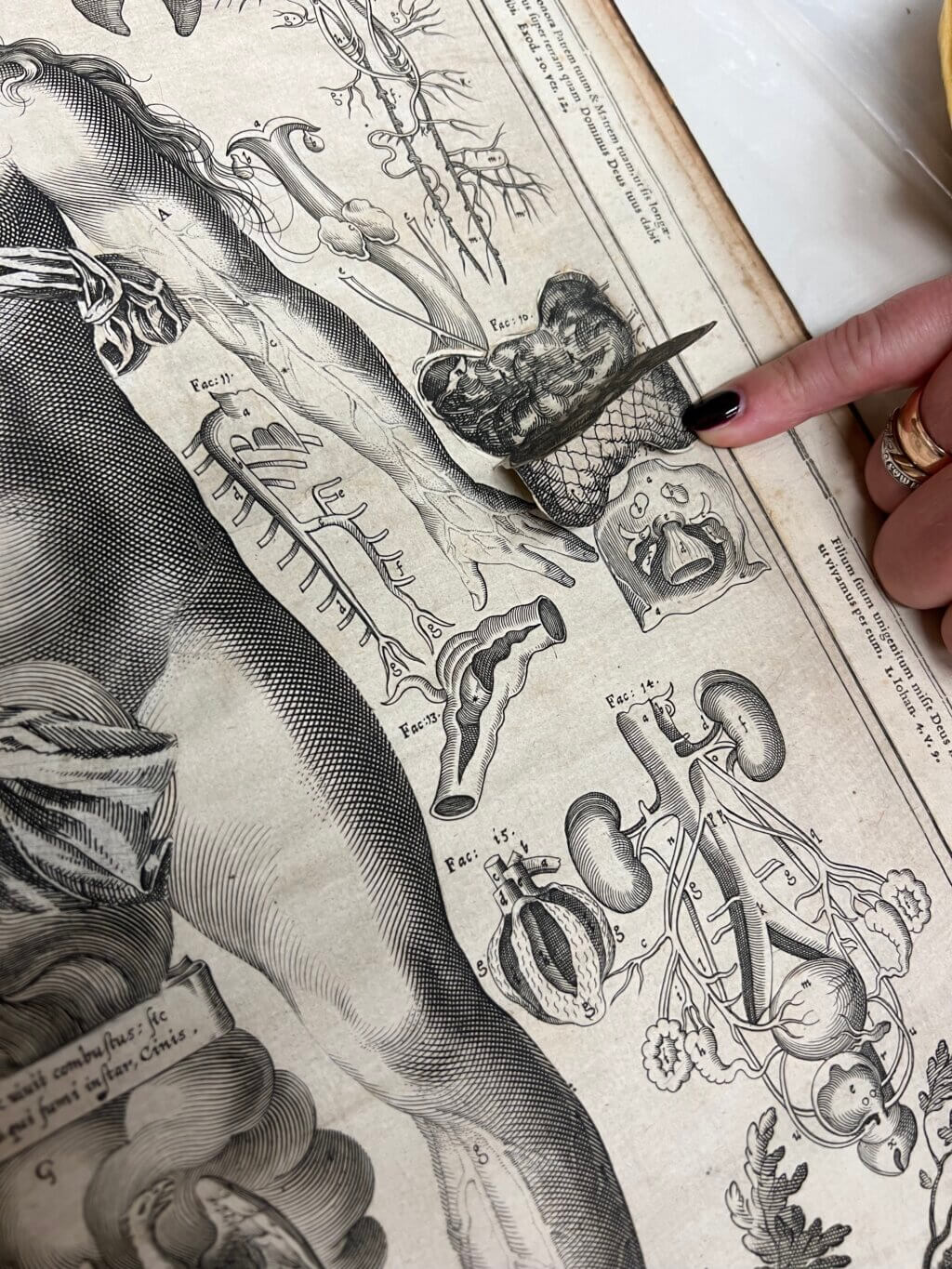
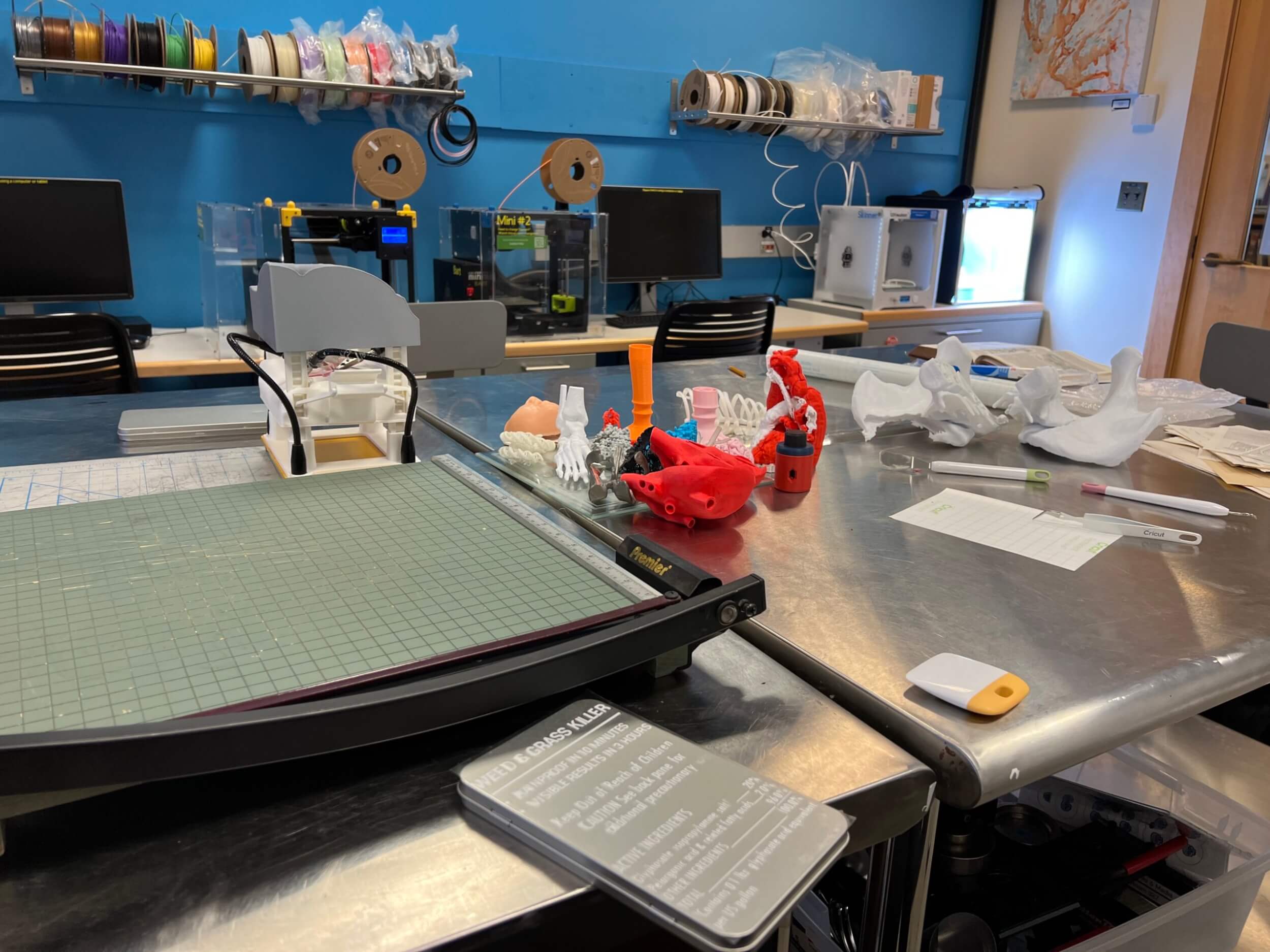
Background on the issue with glyphosate
The broad-spectrum herbicide glyphosate is the most used herbicide in the world, known to cause cancer, with major implications for public health (Zhang et al., 2019). However, the US Environmental Protection Agency (EPA) and the International Agency for Research on Cancer (IARC), came to different interpretations of the research, where the US EPA “concluded that glyphosate is not likely to be carcinogenic to humans” (EPA website). This becomes a public health concern, when reality becomes secondary to the issue at hand to protect the company that utilizes this chemical.
I met with Tracey Woodruff, PhD, MPH, director of the UCSF Program on Reproductive Health and the Environment. During our conversation we discussed resources such as the Monsanto Papers from the US Right to Know. We also discussed the IARC evidence reviews for chemicals and how the IARC labeled glyphosate as carcinogenic and yet the EPA repeatedly denied this evidence. This is apparent through the management of the EPA emails that are accessible through the Industry Documents Library (IDL), which tried to halt the information of glyphosate as carcinogenic when the IARC announced this research finding. We also discussed another interesting area of research where glyphosate has affected the neurocognition of bees. “Glyphosate negatively affects associative learning processes of foragers, cognitive and sensory abilities of young hive bees and promotes delays in brood development” (Farina et al., 2019). This dive into how glyphosate also effects our ecosystems became another research interest for this body of work.
Research with the UCSF Industry Documents Library (IDL)
My primary research has been within the UCSF Industry Documents Library (IDL), specifically the Roundup Litigation Documents within the Chemical Collections. I have read all the email communications between Monsanto and the EPA, which has been enlightening information for the project. IDL includes email exchanges of the EPA discussing the IARC findings, the depositions on Johnson v. Monsanto, and EPA talking points on how to discuss the research coming out about these herbicide products. From this review, I selected the most telling and poignant parts of these email exchanges to include in my photographic project. These selections highlight the attempts to cover up the research that found glyphosate as carcinogenic. With this project, I reprinted these email sections as C-prints (Chromogenic prints), which are photographic prints made from a digital image (or digital scan in my case) and developed using a chromogenic process. This is composed of three layers of gelatin, each containing an emulsion of silver halide, which is used as a light-sensitive material, and a different dye coupler of subtractive color which together, when developed, form a full-color image. I then used glyphosate to physically deteriorate these prints over time as they were buried in the ground. Additionally, I used images from my personal archive of my family’s land that went through the same image treatment and process. The results of these prints varied from partially deteriorated, which highlight specific sections of the print, to completely disintegrated, leaving behind a watercolor-esque, ghost-like image.
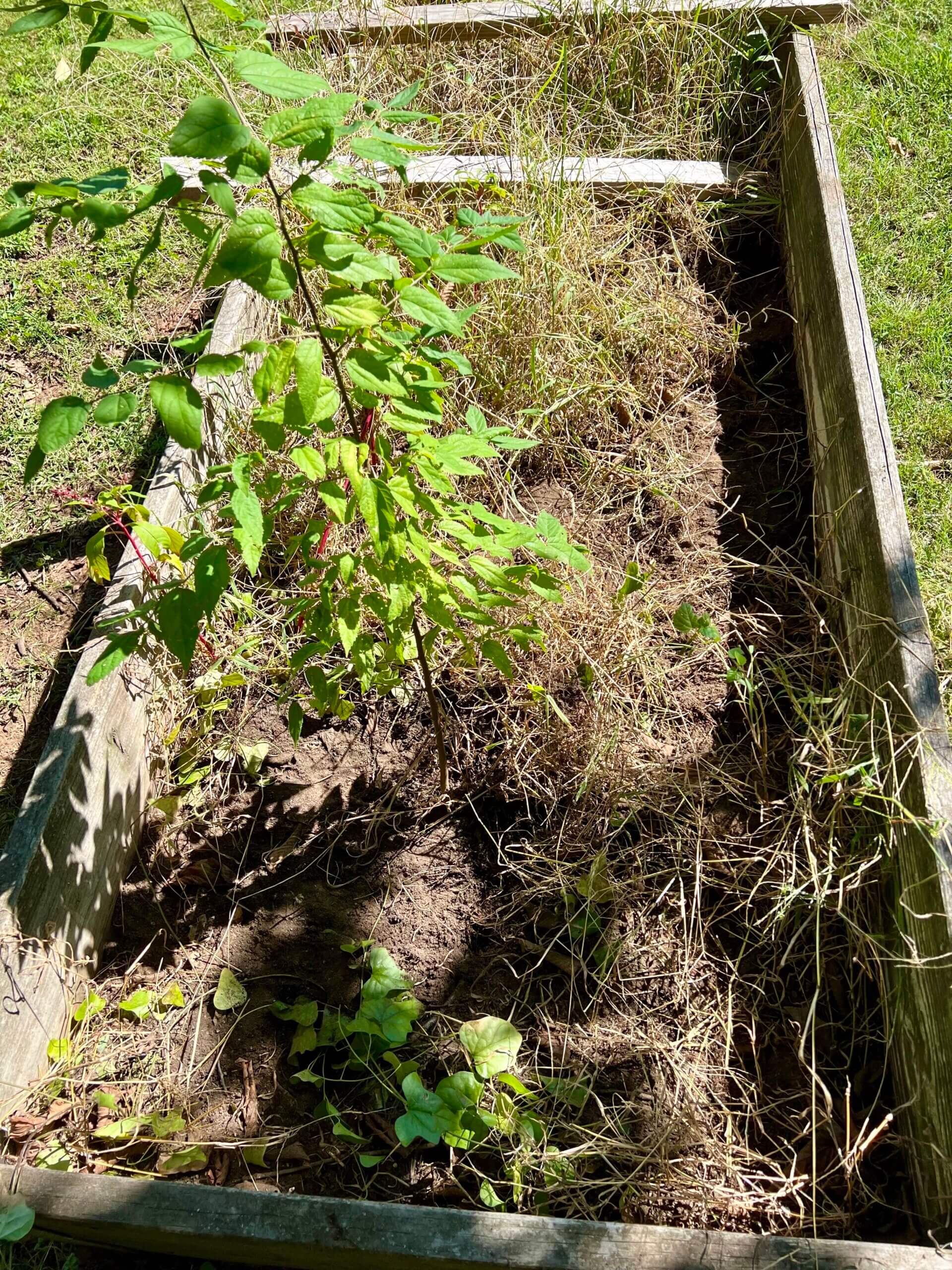
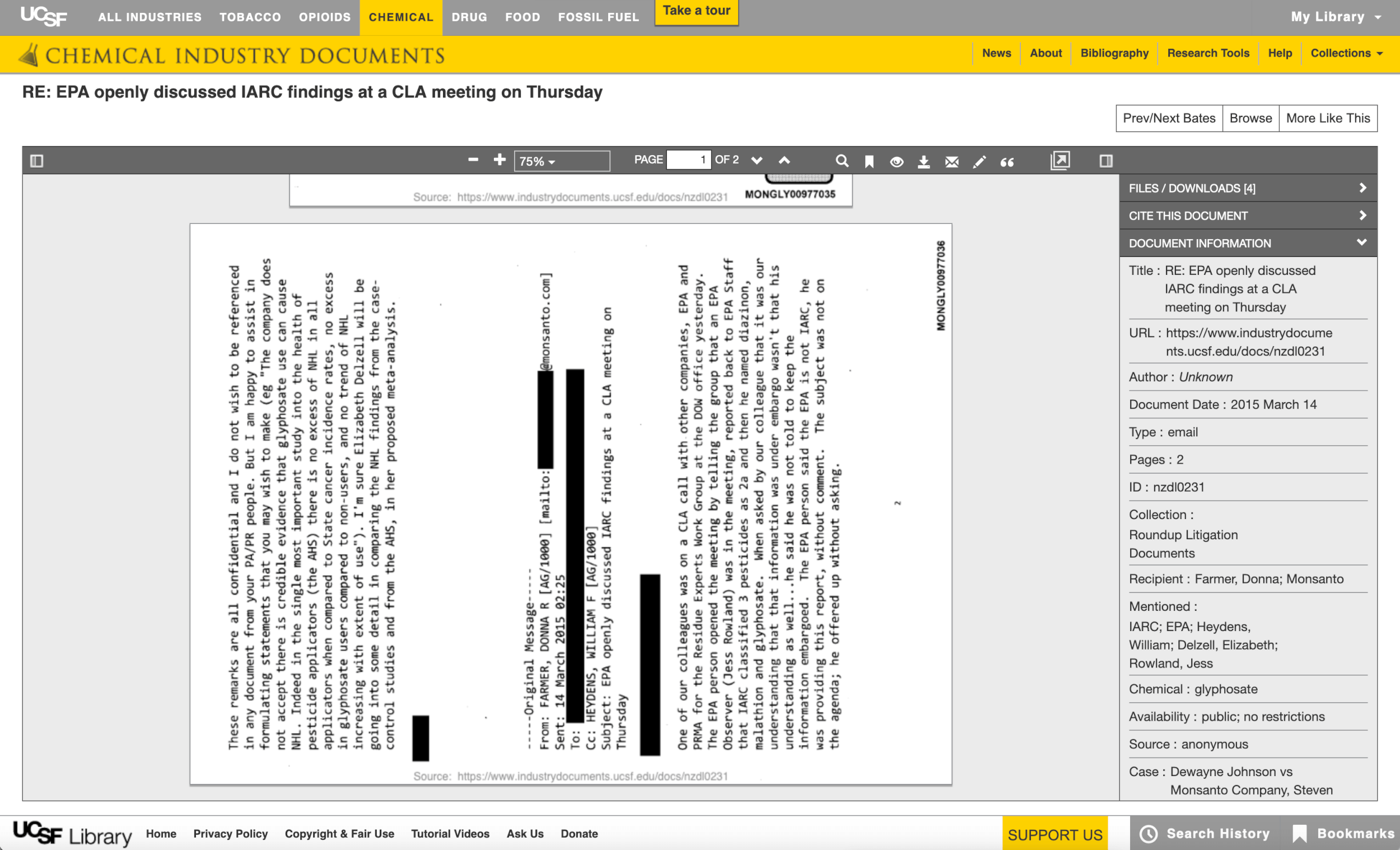
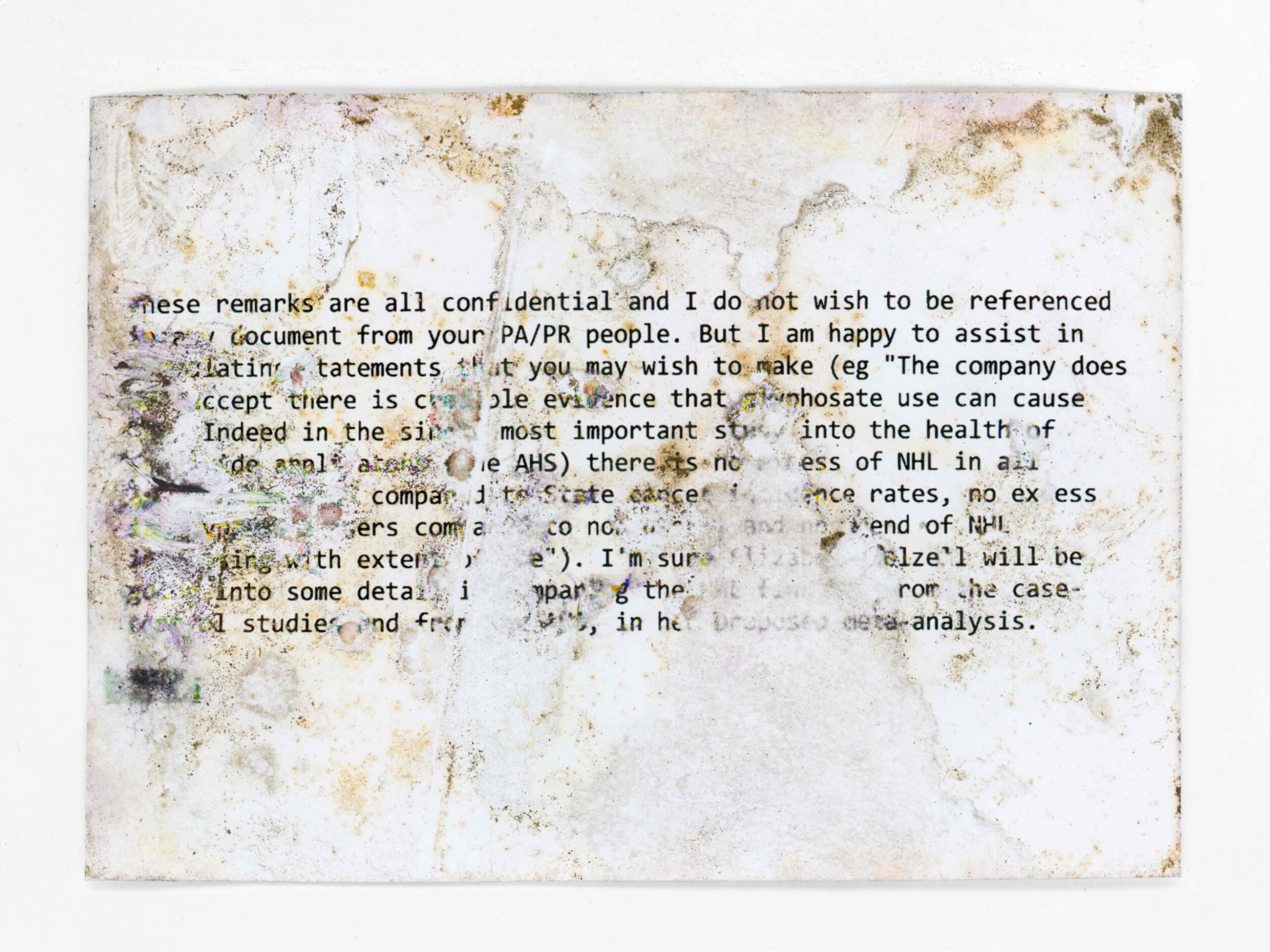
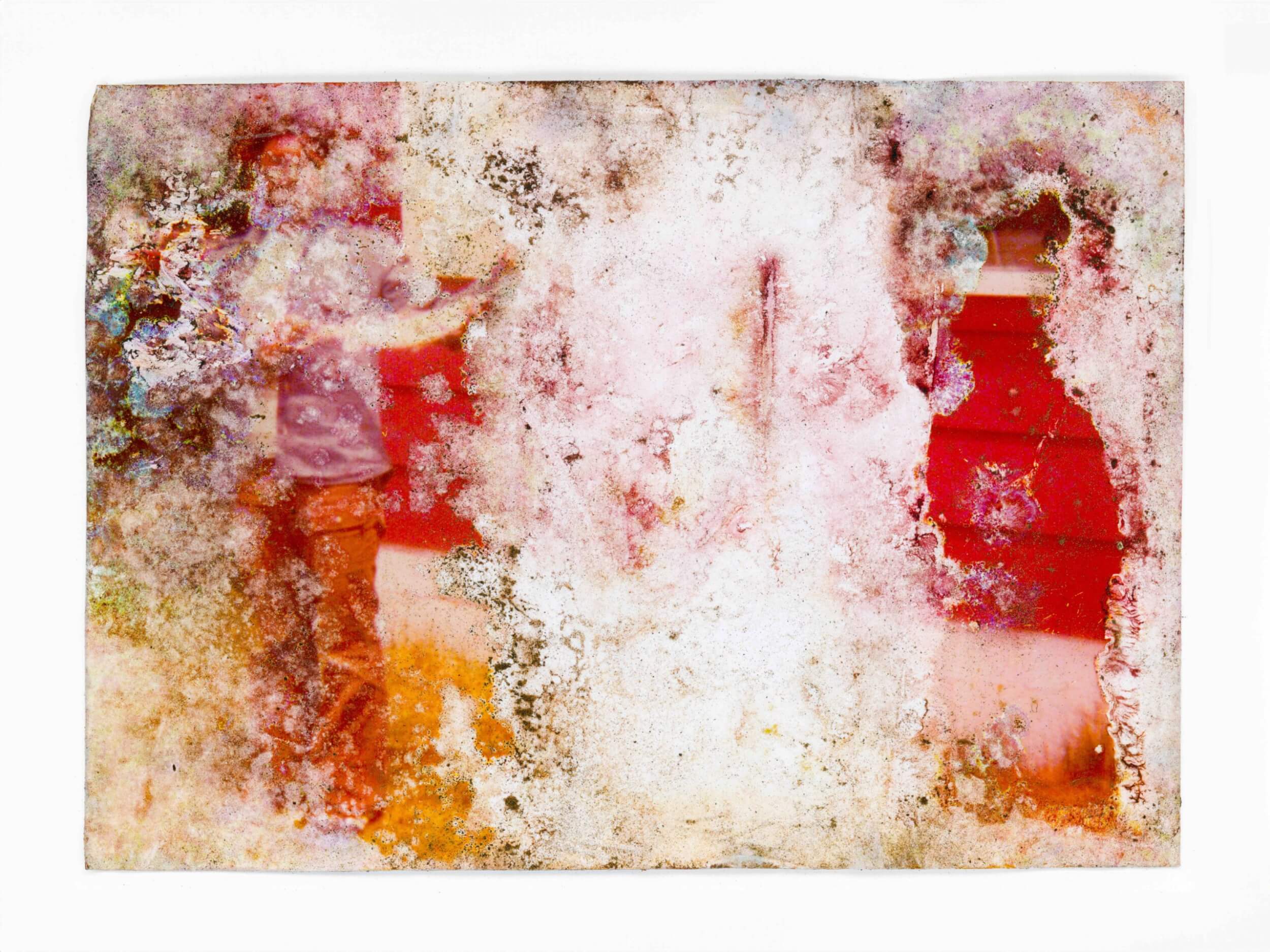
Projection mapping projects
The works that will be displayed in 2024 at the UCSF Library are a component of the larger body of work called Glyphosate Dreams. Some of the following works may not be exhibited at UCSF for the residency exhibition due to space constraints. The research I have been reading on how glyphosate is impacting our ecosystems, led me to another area on how glyphosate is impacting aquatic environments, specifically the common carp. It has been found that glyphosate affects carp in a multitude of ways including liver inflammation, changes to the physical barrier of the intestine, brain effects that decrease both swimming distance and average acceleration, oxidative DNA damage, mitochondrial dysfunction, and reactive oxygen species (ROS) production (Cao et al., 2022). I came across a multitude of images of the physical damage that glyphosate causes to the gills and intestines of carp.
Given my previous interest in aquatic life, I shifted my focus slightly to produce a body of work about the impacts of glyphosate on our aquatic ecosystems. This resulted in a video installation, projection mapping and interactive video project, and a series of prints. This collection of works was displayed in Fort Smith, Arkansas for a popup show titled Cyprinus Carpio L.The video installation, also titled Cyprinus Carpio L., features a series of seven hung sheer fabric pieces, with projections. The projections were created using a combination of images of the deteriorated fish gills and cells from a variety of research papers that were then printed as transparencies and overlaid on top of an overhead projector. The transparencies were then combined with water that created movement for the video. The audio for this piece was created using an underwater hydrophone, picking up on minute sounds and movements from underwater in a nearby lake. In unison, this installation takes microscopic images and projects them at a larger-than-life scale, allowing the viewer to confront the mortality of the carp as they maneuver throughout the hung fabric installation.
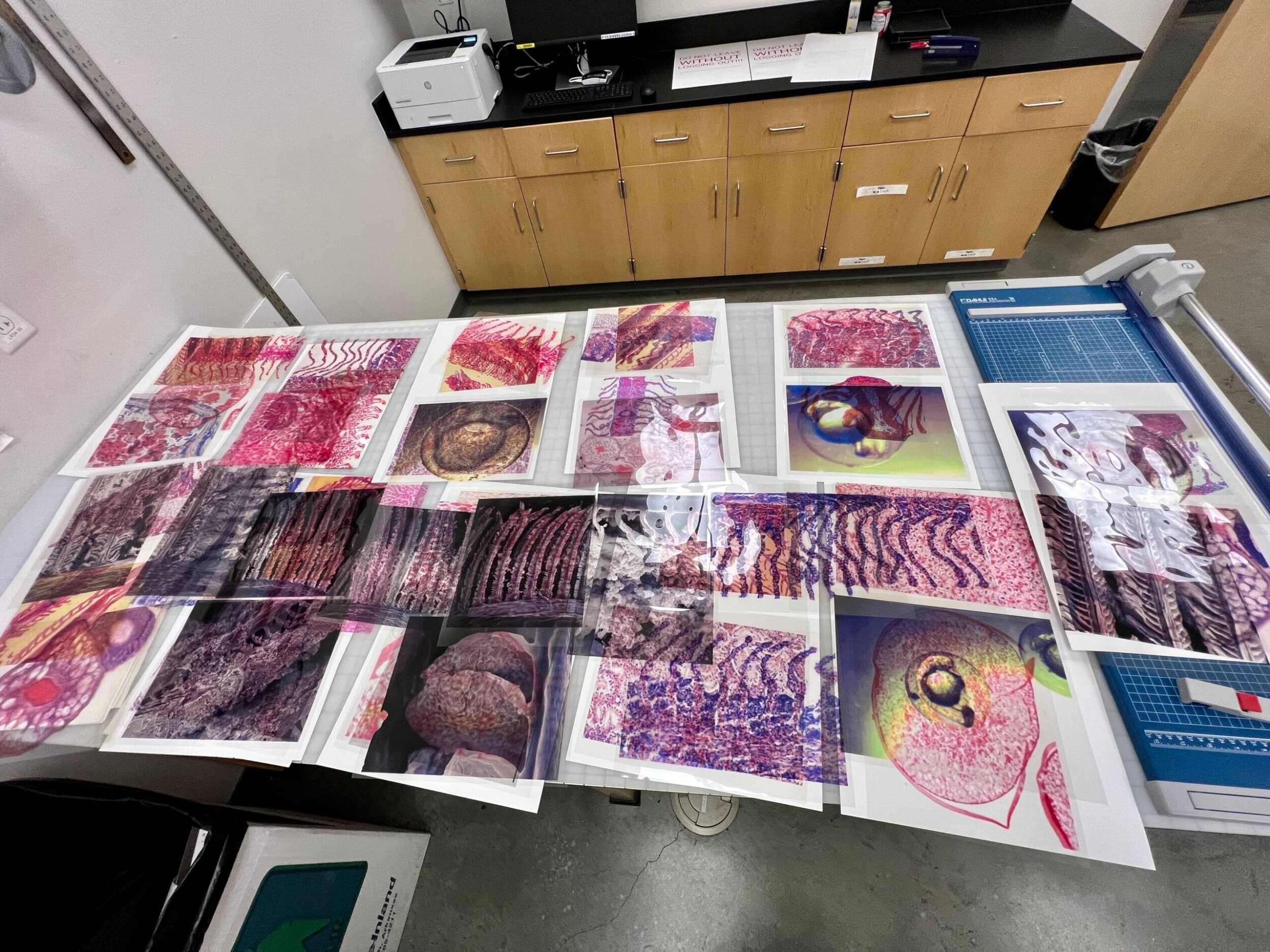
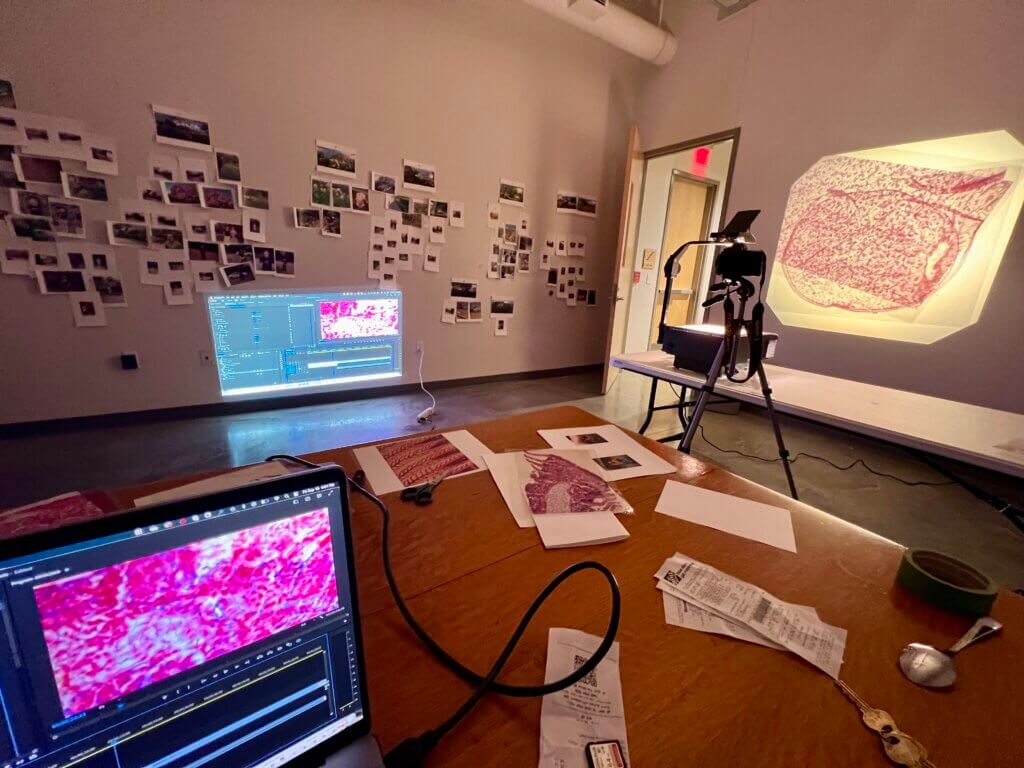
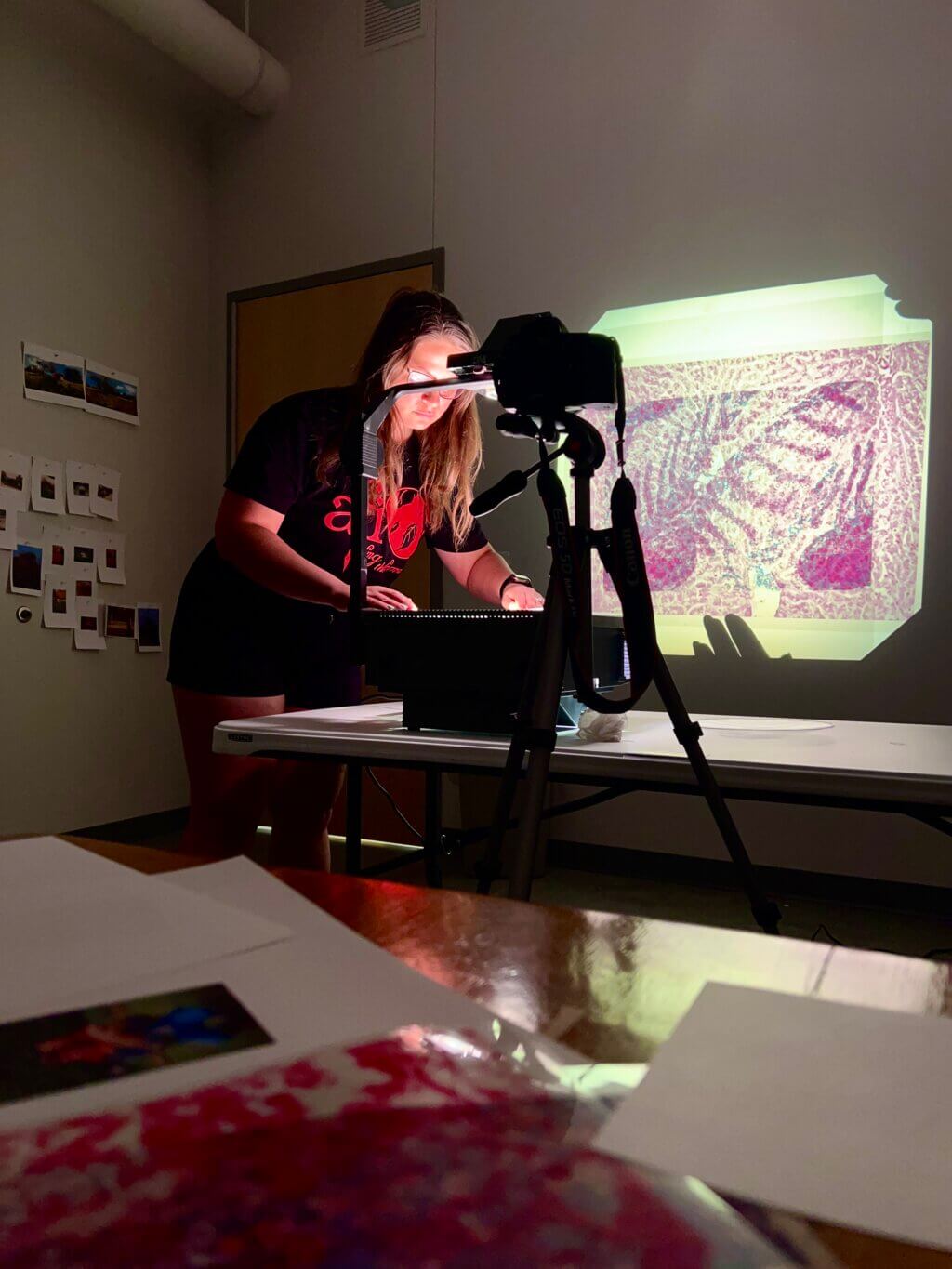
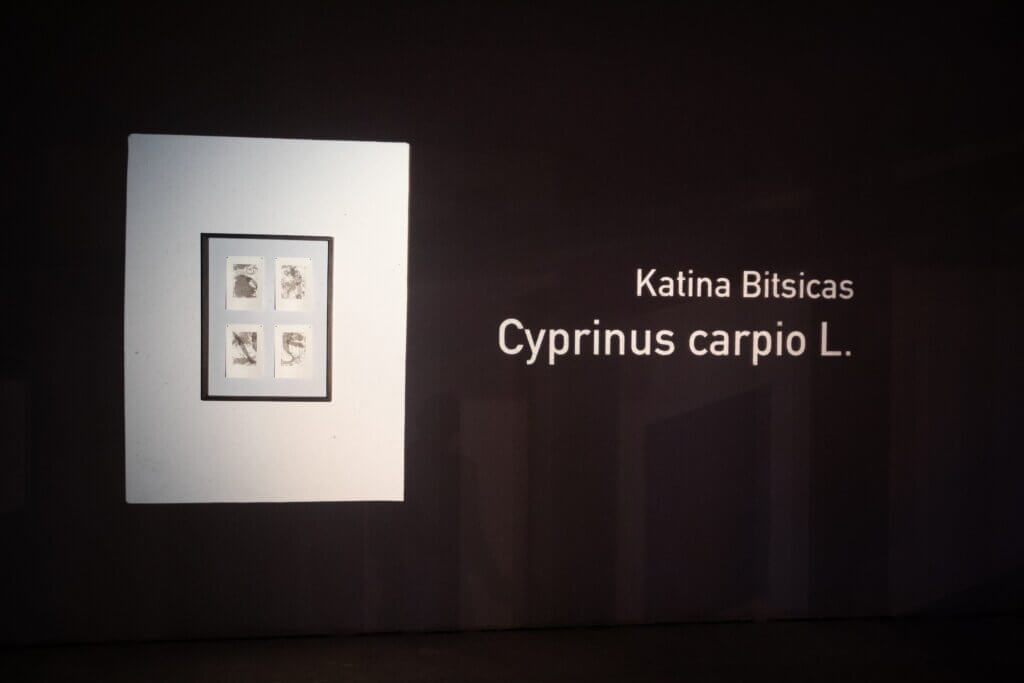
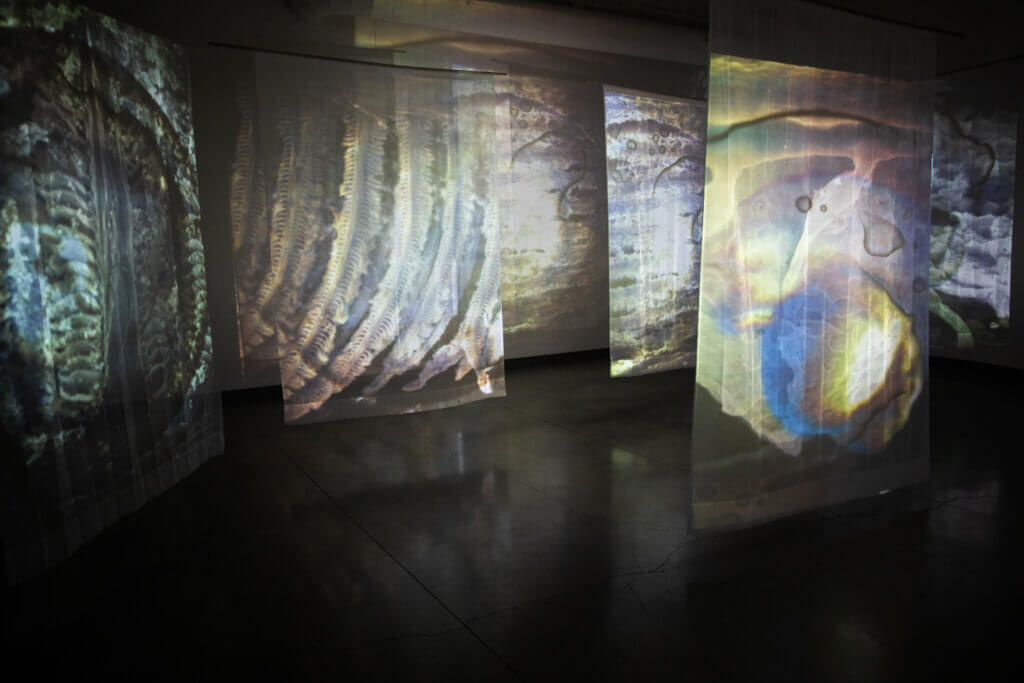
Ctenopharyngodon idella, uses a similar overhead projection technique, but utilizes a hand motion technique on the transparencies to create the moving image. These images are all stained pink and magenta, creating a vibrant image of the damage to the carp. This video is featured in the interactive sculpture, in which the user can transition from a serene pond video to the affected microscopic carp video, demonstrating the effect that humans have on our aquatic ecosystems. The monitor that features the video is covered in a moss-like structure, harkening back again to our untouched natural environment.
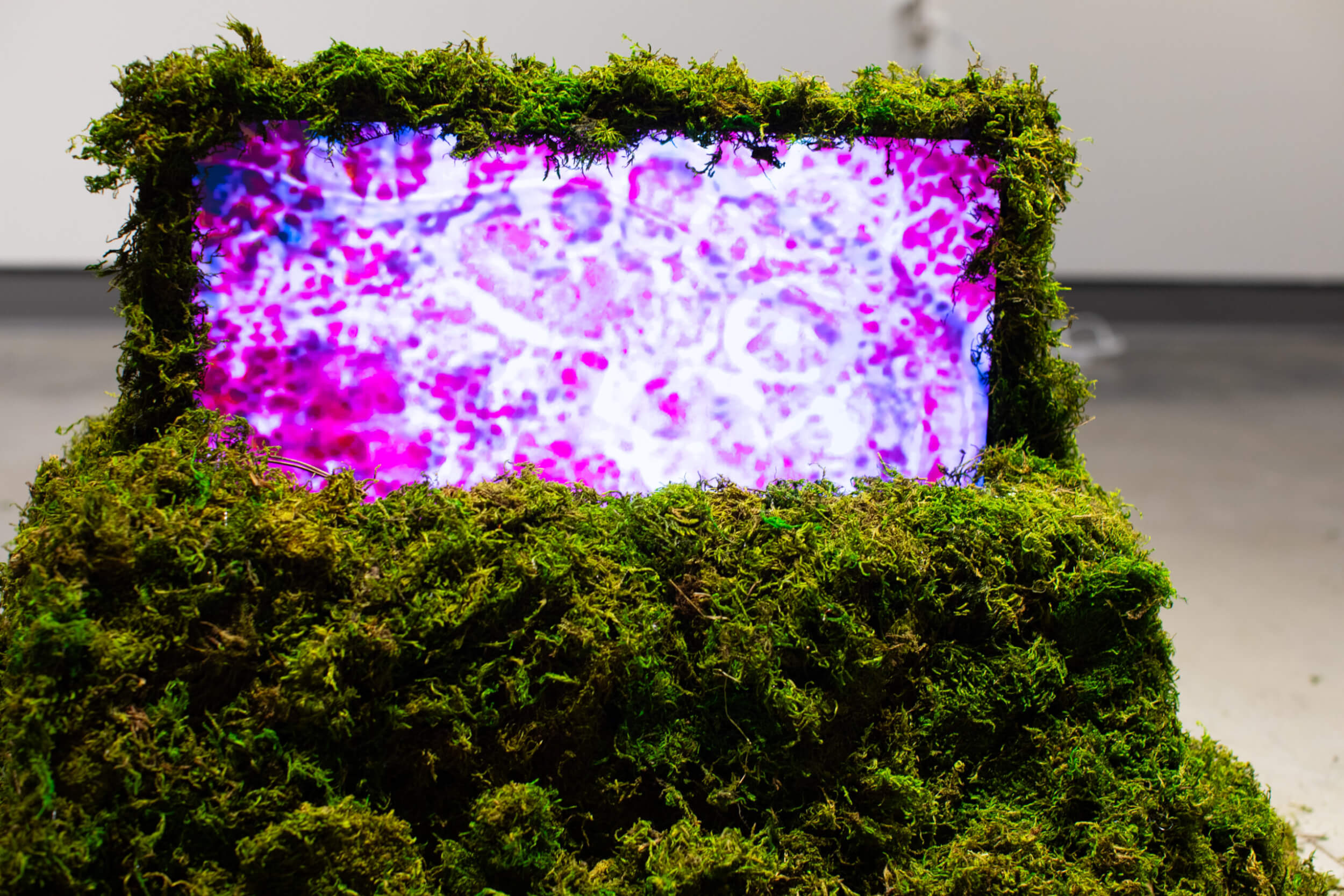

Also in this body of work are a series of letterpress prints made in collaboration with Jay Fox, UAFS director of Book Arts, featuring the deterioration patterns from the glyphosate treated archival images and segments of a lake depth chart map of Burt Lake, a frequented fishing spot. The deterioration patterns conceal and highlight various indication symbols on the map, guiding the viewer along their discovery of the map.
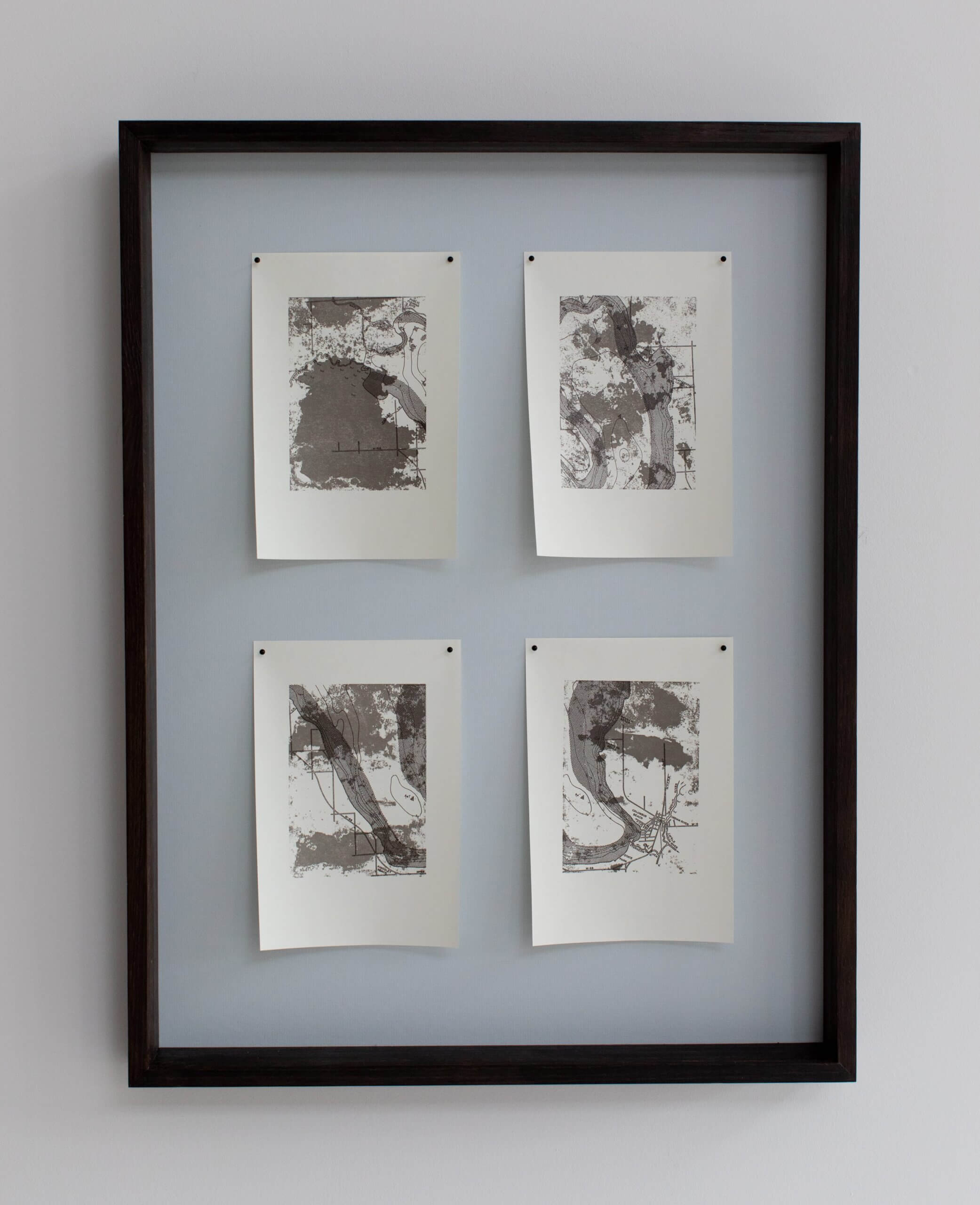
What I’m working on next
Currently, I am working on the augmented reality (AR) portion of this project, which takes the deterioration patterns found in the glyphosate prints and animates them into a virtual work, making the artwork accessible to individuals across the world. The AR filter enables the viewer to place the work on top of their inhabited land to visualize the detrimental effects instantaneously. I have also been working on an experimental documentary in virtual reality (VR) which will utilize both present-day 360 footage, combined with archival images and video.
I also met with Mohammad Naser, PhD, microscopy specialist at the UCSF Biological Imaging Development Center. We discussed a variety of staining techniques as well as how human tissue can be viewed as a landscape. We can view the water, land, and trees around us as this ecosystem that can be seen in parallel to the ways we view and analyze human tissue with its multiple facets; so, the body can be seen as a topography. We are looking into future collaborations and how color theory from an artist’s perspective can be incorporated into staining techniques when visualizing each unique pattern.
I have been so grateful to the UCSF community for welcoming me both virtually and in person into each of their own unique specialties. I have learned so much and look forward to continuing this body of research and artistic works. You can follow my progress and keep up to date on the future exhibition of the work on the UCSF Library Artist in Residence webpage.
Works cited
Zhang, Luoping, et al. “Exposure to Glyphosate-Based Herbicides and Risk for Non-Hodgkin Lymphoma: A Meta-Analysis and Supporting Evidence.” Mutation Research/Reviews in Mutation Research, vol. 781, 2019, pp. 186–206. https://doi.org/10.1016/j.mrrev.2019.02.001
“Glyphosate.” United States Environmental Protection Agency, 2023. https://www.epa.gov/ingredients-used-pesticide-products/glyphosate
Farina, Walter, et al. “Effects of the Herbicide Glyphosate on Honey Bee Sensory and Cognitive Abilities: Individual Impairments with Implications for the Hive.” Insects, 2019. https://www.ncbi.nlm.nih.gov/pmc/articles/PMC6835870/
Cao, Xianglin, et al. “Toxic effects of glyphosate on the intestine, liver, brain of carp and on epithelioma papulosum cyprinid cells: Evidence from in vivo and in vitro research.” Chemosphere, 2022. https://pubmed.ncbi.nlm.nih.gov/35489457/
